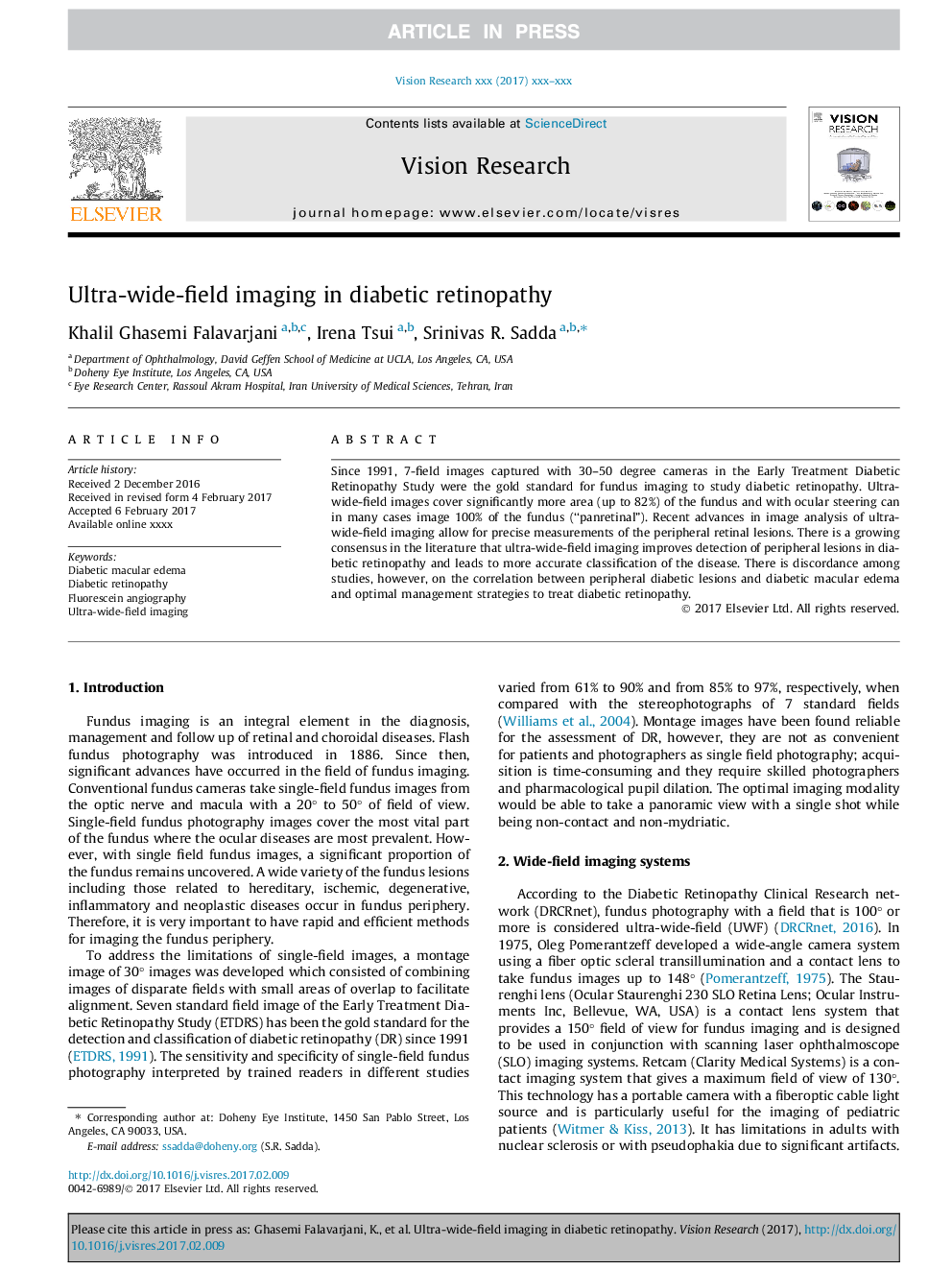| Article ID | Journal | Published Year | Pages | File Type |
|---|---|---|---|---|
| 8795395 | Vision Research | 2017 | 4 Pages |
Abstract
Since 1991, 7-field images captured with 30-50 degree cameras in the Early Treatment Diabetic Retinopathy Study were the gold standard for fundus imaging to study diabetic retinopathy. Ultra-wide-field images cover significantly more area (up to 82%) of the fundus and with ocular steering can in many cases image 100% of the fundus (“panretinal”). Recent advances in image analysis of ultra-wide-field imaging allow for precise measurements of the peripheral retinal lesions. There is a growing consensus in the literature that ultra-wide-field imaging improves detection of peripheral lesions in diabetic retinopathy and leads to more accurate classification of the disease. There is discordance among studies, however, on the correlation between peripheral diabetic lesions and diabetic macular edema and optimal management strategies to treat diabetic retinopathy.
Related Topics
Life Sciences
Neuroscience
Sensory Systems
Authors
Khalil Ghasemi Falavarjani, Irena Tsui, Srinivas R. Sadda,
